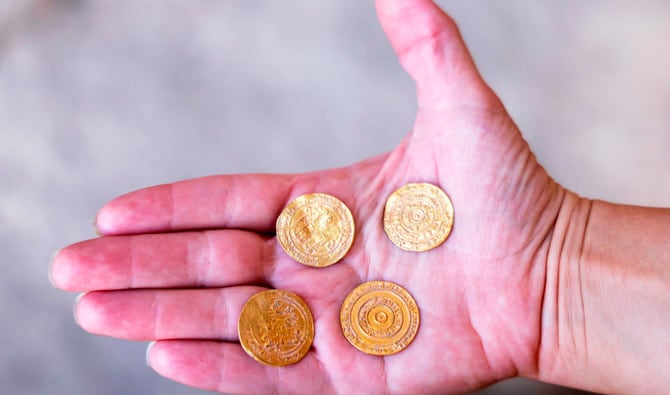Super zpráva a nález! Ve stáří mincí vznikl trošku rozpor. Uvádí se zde, že jsou z konce 9. století a zároveň "z období mezi roky 940 a 970". Přepis arabských jmen je oříšek. Jméno al-Qasim bych klidně přepsal jako al-Kásim. Není nutné přejímat to po anglicku. Pěkně to mají zpracované např. zde: http://nase-rec.ujc.cas.cz/archiv.php?art=6219
The jar found in Jerusalem a month ago has now given a surprising golden testimony
Categories: Minting - Numismatics , Finds and rescue research abroad , Nálezy nejenom s detektorem na blízkém východě
The small vessel was discovered during an archaeological survey prior to the stamping of a new elevator shaft in the Jewish quarter of the Israeli capital. It appeared empty, with only a thin layer of dirt at the bottom. After a few weeks, it turned out that the dirt was hiding four gold coins from the late 9th century. According to experts, this is a rare find - it is the first gold treasure from the Fátima Caliphate in Jerusalem in 50 years...
Archaeologists discovered the jar on August 18 while exploring the site in front of the construction of the elevator to the Wailing Wall in the historic square in the Old City of Jerusalem. The finder was Yevgeni Kapil, an inspector from the Israel Antiquities Authority (IAA). The jug, little bigger than a coffee cup, had been awaiting preservation ever since. A few weeks later, the director of archaeological work, David Gellman, inspected the jar and it was he who discovered four gold coins, nearly 1,100 years old, under a layer of dirt.
"This is the first time in my career as an archaeologist that I have discovered gold. It's incredibly exciting," Gellman said in a statement. The archaeologists are excited not only about the gold itself, but especially about the fact that the coins have given them a very precise time for the jar's deposition and shed light on a number of other connections. According to the IAA, the coins date from between 940 and 970. This era represented one of the major political transformations in the region, when the Shiite Fatima dynasty conquered Egypt, Syria and Israel to replace the Sunni Abbas dynasty. Some scholars considered this social change a step backwards from the previous advanced Byzantine culture.
Two coins in the set were minted in the city of Ramla in central Israel during the reign of the Sunni caliph al-Muti and his regional governor Abu 'Ali al-Qasim ibn al-Ihshid Unujur, who administered the area from 946 to 961. Other coins were minted in Cairo during the reigns of the Shi'ite ruler al-Mu'izz (953-975) and his successor al-Aziz (975-996). All four coins are pure gold.Experts say the find helps paint a picture of the world at the time and, along with other recent discoveriesin recent years are changing the way historians view the end of Byzantine rule and the beginning of the Fatima Caliphate.
"The coins were perfectly preserved and did not even need to be cleaned, they could be identified immediately," Robert Kool, an expert numismatist at the IAA, said in a statement. "This is the first time in 50 years that a gold treasure from the Fatima period has been found in the Old City," he added. It is not known who hid it and why. The money could have represented someone's entire savings for several months ahead, but it could just as easily have been a "forgotten" part of a much larger hoard of, for example, a wealthy family.
"Four dinars was a considerable sum for most of the population. At that time, the majority of people lived in difficult conditions," Kool said. "The amount was equal to a month's salary of a young clerk or four months' salary of an ordinary worker. But some people could earn much more; for example, a senior treasury official could earn up to 7,000 gold dinars a month. And if he was in business or had income from his rural estates, he could earn several hundred thousand more gold dinars a year," Kool explained.
Roman Nemec







Sources: arabnews.com, livescience.com, thetimes.co.uk
The article is included in categories:




